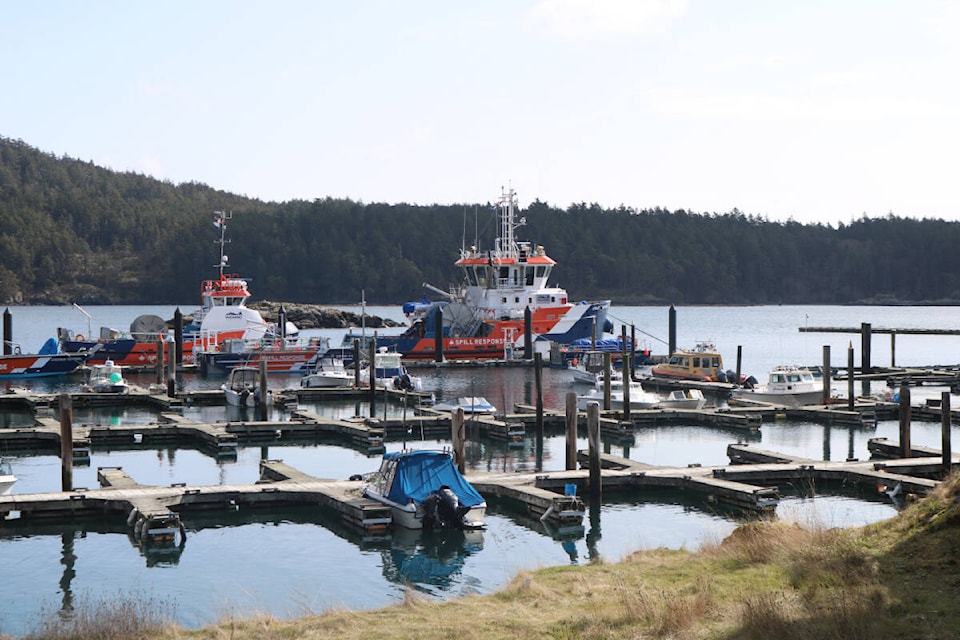Scia’new First Nation is building for the future, fuelled by traditional knowledge, the ocean and modern technology.
Chief Russ Chipps has been pushing to bring economic opportunities to the nation in order to get people to return home for years.
“People are talking about reconciliation,” Chipps said. “You go to communities where they really recognize you, your community, and territorial acknowledgments, those are all awesome things and a good step to reconciliation. But it is the economic development, the generational wealth that we need to bring our people home - that is what reconciliation looks like to me. Without generational wealth for our community, there are jobs outside the reserve and we need to get jobs inside, otherwise it’s not pointless, but certainly it’s going to make it easier for them when they get here.”
Sitting on a beautiful portion of the southern Vancouver Island coast, the ocean was key to the nation’s traditional ways of life and now it is bringing back economic opportunities to Scia’new.
Western Canada Marine Response Centre has moved one of its oil spill response centres to the nation’s harbour at Cheanuh Marina, with an oil spill response ship stationed there.
The base is part of a larger $150-million expansion by Western Canada Marine Response Centre into Sidney, Port Alberni, Nanaimo and Ucluelet to meet enhanced spill response requirements for the Trans Mountain pipeline expansion project. Another partnership between shipping company Kotug and Trans Mountain has brought tug boats tasked with transporting tankers around the Island’s coast.
READ MORE: West Shore-based tugs to escort oil tankers through Strait of Juan de Fuca
“This wasn’t a handout or a government cheque - this was fought for,” Chipps said, pointing towards the ships.
Just outside of the bay lies Race Rocks, a small outcrop just off the shores that oil tankers will have to navigate on their way around the island. Chipps emphasized the rocks and the natural protection the bay the Cheanuh Marina sits in has when making his pitch to WCMRC. He says once WCMRC saw that, they were sold.
With equipment moving in, members of the nation are getting training for commercial diving and ship operating licences, and in recent years have established the nation’s Ocean Resources department.
Michael Campbell, the manager of Ocean Resources, said it has grown from “not really a department” to a dozen staff. They’re doing a variety of work within their territorial waters, including surveys on crab and herring populations, habitat rehabilitation, and monitoring ships passing through the waters.
Much of the work combines cutting-edge technology with traditional knowledge. Members of the team completed their commercial drone licence testing so they can use drones as part of monitoring programs and are employing geofencing around their territorial boundaries to monitor ships that pass through Scia’new waters.
Traditional knowledge has proved invaluable. Last summer, a visiting researcher was doing a survey in the bay for crab. After a few days, he hadn’t found anything, so Clarence Campbell, a member of the Scia’new First Nation and one of the team leads at Ocean Resources, added some of his own bait to the line and checked the results the next day.
“We got more crab than we did is using his bait throughout the whole week.”
During the pandemic, the group was also able to dive and provide seafood for some elders in the community.
“Elders were saying all the seafood’s gone and what we found out is that there was (crab) deeper,” he added. “It felt good to be able to come back and tell them they’re not gone, it’s just deeper. They used to be able to on sit on the rocks and pick urchins off the ground, off the docks. Now we have to dive for them.”
Restoring the habitat is part of the plan to provide for the nation’s people and establish economic opportunities for everyone who lives there. Combining the two knowledge bases is something Chipps hopes will make the nation the centre for “research, development and ocean protection.”
“Other people are just learning, they’re just going to the books or Google Search technical stuff. Here they’re adding traditional knowledge and translating Western science into traditional knowledge,” said Chipps. “Our food’s in the water - if we don’t keep the table clean, the food’s going to go bad.”
Many of the team members have come back to the nation for work, or are looking to move back after living elsewhere. Tim Charles lived in Langford for about a decade until he moved back to the nation around eight years ago, doing a year-and-a-half intern program with the Canadian Coast Guard before joining Ocean Resources.
Several in the team were involved in the nation’s forestry program before, like Campbell and Marcus Goldsmith, who is originally from Esquimalt First Nation but moved to Scia’new and worked with the forestry department before joining Ocean Resources.
“I guess you could say protector of Mother Earth getting rid of the invasive species … then basically being from the top of the trees to the bottom of the ocean and learning all the sea foods that you have underwater,” said Goldsmith.
Chipps hopes to partner more in the future with neighbouring First Nations, as well as other municipalities in order to get more of his people opportunities in the nation’s territory.
“Every year, we’re getting bigger and stronger because everyone’s willing to learn and that’s what we look forward to, teaching people in the water’s ways,” said Campbell.
bailey.moreton@goldstreamgazette.com
Like us on Facebook and follow us on Twitter.
